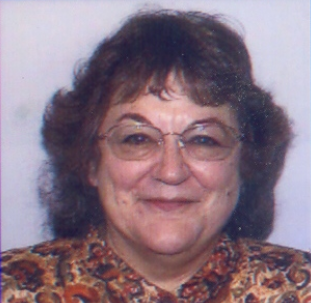In the March issue of Perspectives this column described a number of issues that have emerged in AHA planning discussions as ones likely to affect many history departments in the near future. (Indeed, judging by the issues brought to the AHA Council when it met in January, some departments are already struggling with the implications of downsizing, the changing market for graduate students, and the like.) Letters received in response to the March column have been very helpful; we hope that others will write about their particular viewpoints and concerns so that these can be shared more widely with AHA members as well as the AHA Council, divisions, and committees.
I have had the opportunity this month to visit with faculty and graduate students in three different settings—a state land-grant university, a Big Ten campus, and a cluster of community colleges and state university campuses in California. These discussions have been invaluable for illuminating the ways in which different kinds of institutions face both similar and different challenges. The discussions have pointed to the need for collaborations across institutional boundaries to accomplish some of the professional, substantive, and pedagogical goals many departments would like to achieve. In addition, participants proffered thought-provoking suggestions regarding possible contributions that could be made by the AHA, as the umbrella organization for those who do history. Not least of these suggestions has been facilitating consensus around certain central values to be protected—such as what we mean when we talk about “quality” in undergraduate and graduate programs.
Strategies and future activities will be discussed next January in New York at the department chairs’ luncheon during the AHA annual meeting. In the meantime, I’ll use this column to provide a brief progress report on the insights gained from the institutions I visited.
Perhaps the theme most consistently reflected in all three venues was the need to convey a broadened definition of “historian” to graduate students and to reflect this definition in the kind of training graduate students receive from Ph.D.-granting institutions. These broader options, discussants agreed, need to be presented to graduate students as a range of legitimate choices, however much they depart from the dominant mode of the research university. Clearly, this dominant model is not characteristic of most historians even now, but developments in the job market described in the last two issues of Perspectives underscore the fact that this model will become less and less likely for most historians in the future. (See Perspectives, March 1996, p. 7, and Perspectives, April 1996, pp. 11 and 13).
Discussion participants identified several possible contributions that the AHA could make toward educating graduate students about alternative career options. Additional information about job opportunities in a broad range of fields would certainly be helpful. Such information could include a description of what’s happening to the job markets in different fields as well as “how to” information for identifying and applying for specific job openings. (In order to provide this information, we would need to overcome obstacles such as the decentralized nature of community-college data collection and the amorphous range of professional positions usually included in the category “public history.” We are now searching for ways to do so.)1
Especially compelling, given the three very different institutional settings where the discussions took place, was the recognition that historians share a practice of history based on the connections between research and teaching (including the dissemination of history to the public). This focus on the interconnectedness of research and teaching gave rise to two additional themes. Concerning research, discussants noted that, with increased workloads and policy makers’ attempt to pose research and teaching in opposition, fewer and fewer members of the academy will have the support, time, or energy to continue their research and their efforts to stay abreast in their specialties. As one impassioned commentator put it, “Research ultimately frames the issues and the terms of the debate within the field. In recent years, a larger and more diverse range of voices has been heard in this debate. If the majority of institutions deny their faculty the opportunity to do re search, that range of voices will become narrower and narrower. This will not only impoverish the field, it will mean that the kind of new research on which teachers base their teaching will also become narrower. This is in no one’s interest, including those administrators and policy makers who insist on accountability that emphasizes teaching.”2
Also related to this interconnectedness between teaching and research is the shared underlying concern with what history teachers do. Teaching as the paramount activity unites faculty in four-year institutions, community colleges, and K–12 schools. Concern with student preparation and the need to involve students in active-learning processes in the face of increasing class sizes and narrowed course offerings underscores the importance of collaboration among teachers at all levels. Historians at each place I visited described their desire to connect to K–12 teachers. And all participants saw clearly that an emphasis on accountability that measures not the quality of the teaching-learning process but merely the quantity of contacts not only shortchanges students but creates circumstances in which it becomes impossible to practice good history. In this context, increased cooperation and communication are essential so that historians can seize the initiative and frame the discussions that will yield measures and understandings of the effective delivery of curriculums.
After these ideas had been broached at the land-grant and Big Ten departments I visited, I attended with special interest a gathering that brought together four California State University and five community-college campuses. The potential recognized by departments at the first two institutions was clearly demonstrated in this last gathering. Participants discussed together curriculum content (especially how to capture new intellectual directions in the field), the need to establish consensus around measures of quality and what needs to be protected, processes for working together to establish achievement expectations for students, and beginning to articulate to Ph.D.-granting institutions what they would look for and need from future faculty.
Equally significant, this southern California gathering illustrated another strategy that was recognized by all departments as essential for survival: advocacy, especially if this could be based on local or regional collaborations. Members of all these departments felt that advocacy on behalf of history needs to operate at several levels simultaneously. At a national level, it would focus on making the case for the contribution that historical study brings to an informed civil society. It would work to frame national discussions about doing history not on ideology, but on inculcating historical thinking among learners. At a local and state level, it would rhetorically connect the doing of history with necessary funding levels and with appropriate measures of quality and outcome. In advocacy as in professional issues and research and teaching, historians have discovered that they do better when they work together, creating consensus and forming coalitions to pursue their goals. The AHA stands ready to help.
Notes
- A booklet being collaboratively created by the Organization of American Historians and the AHA will provide essential information about community-college positions; it should be available by early fall. [↩]
- The AHA Teaching and Research Divisions have identified the connections between teaching and research as a fundamental topic on which they would like to build a major new initiative. As we explore in future months a possible shape for this project, which will work from regional bases to bring historians at all levels together, we seek ideas, models, and suggestions from our constituencies. [↩]

